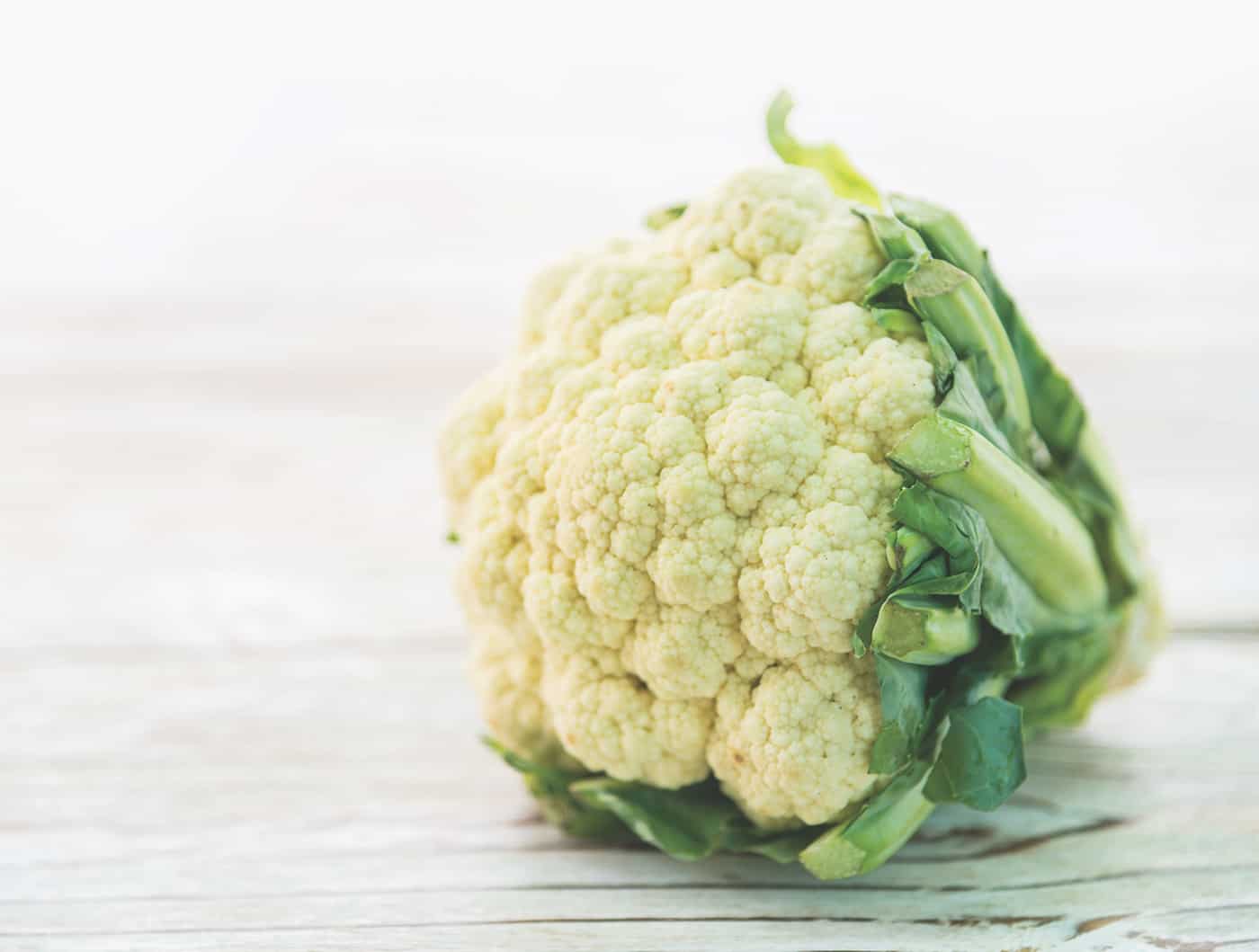
What do Pinterest feeds, restaurant menus, and Trader Joe’s have in common? They’re all chock-full of cauliflower. The cold-weather vegetable has taken the food world by storm, appearing in roasted form on small plates and as a carb-light replacement in everything from mashed potatoes and pizza crust to mac and cheese and cake. It may seem odd that a plant resembling pallid broccoli has become so popular, but aside from being tasty, it’s a nutritional powerhouse, too. High in fiber and B vitamins yet low in calories, cauliflower boasts a top-20 ranking on the Aggregate Nutrient Density Index rating scale. One cup of chopped raw cauliflower contains two grams protein and 77 percent of the daily recommended dose of vitamin C (plus decent amounts of vitamin K and folate). That goodness doesn’t come easy—growing cauliflower can be laborious. The cruciferous crop is extremely temperamental and requires consistent temperatures around 60°F, soil rich with organic matter, and at least six hours of full sun to mature properly. While it might not be the best choice for your late-season garden, worry not: Cauliflower is abundant (and inexpensive) at the supermarket.
When shopping for cauliflower, seek heads with compact florets free of brown spots and bright green leaves that are firmly attached. Store in a plastic bag in the refrigerator up to five days. Deftly versatile, cauliflower may be blended into creamy soups, pickled for a mouth-puckering snack, or sliced into “steaks” as a hearty vegetarian entrée. Our favorite preparation, however, is a bit more indulgent. Meet cauliflower cheese, a traditional English dish often served with roasted meat and potatoes. Think potatoes gratin using cauliflower as a stand-in starch, sharp cheddar, and a healthy dose of mustard. A cozy winter dish if ever there was one.
PHOTO: Stockforlife/Shutterstock.com
[yumprint-recipe id=’927′]



